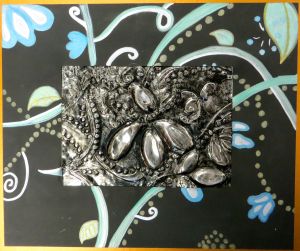 This is a project that I can’t take credit for. It’s been floating around the web for a while. However, the process is simple and the results are stunning.
This is a project that I can’t take credit for. It’s been floating around the web for a while. However, the process is simple and the results are stunning.
I’ve done this project with kids as young as kindergarten and up to fifth grade, as an enrichment sort of project.
The timing is important, at least in Colorado. I love to do this project in the fall and ask students to bring in a leaf from home (in a Ziploc bag to stay fresh). But with a class rotation that can go on for a while, it can be tricky getting leaves that are soft and supple before it gets cold and the leaves get crunchy.
So, here’s the process.
Have students roll out a slab of clay. I’ve used a red body and a white body clay. It’s just a personal preference and sometimes dicatated by the type of glaze.
Students place the leaf bumpy side down on the clay. (One side of the leaf will have veins that are a little bumpier and more pronounced)
Either the students (or maybe an adult helper, if they are little) cuts the leaf out with a needle tool or a paper clip or tapestry needle.
Remove the excess clay and put the prettiest side of the leaf facing up in a bowl. Gently press the clay into the bowl, shaping the leaf.
Let dry and remove from the bowl. Fire – I usually use a clay that is fired 04 to 06.
Let students apply glaze and re-fire.
Some favorite glaze options: Mayco Elements Chunkies, and watercolor underglazes with a clear overglaze.
Students and parents both are always delighted with the end result! (me too)














